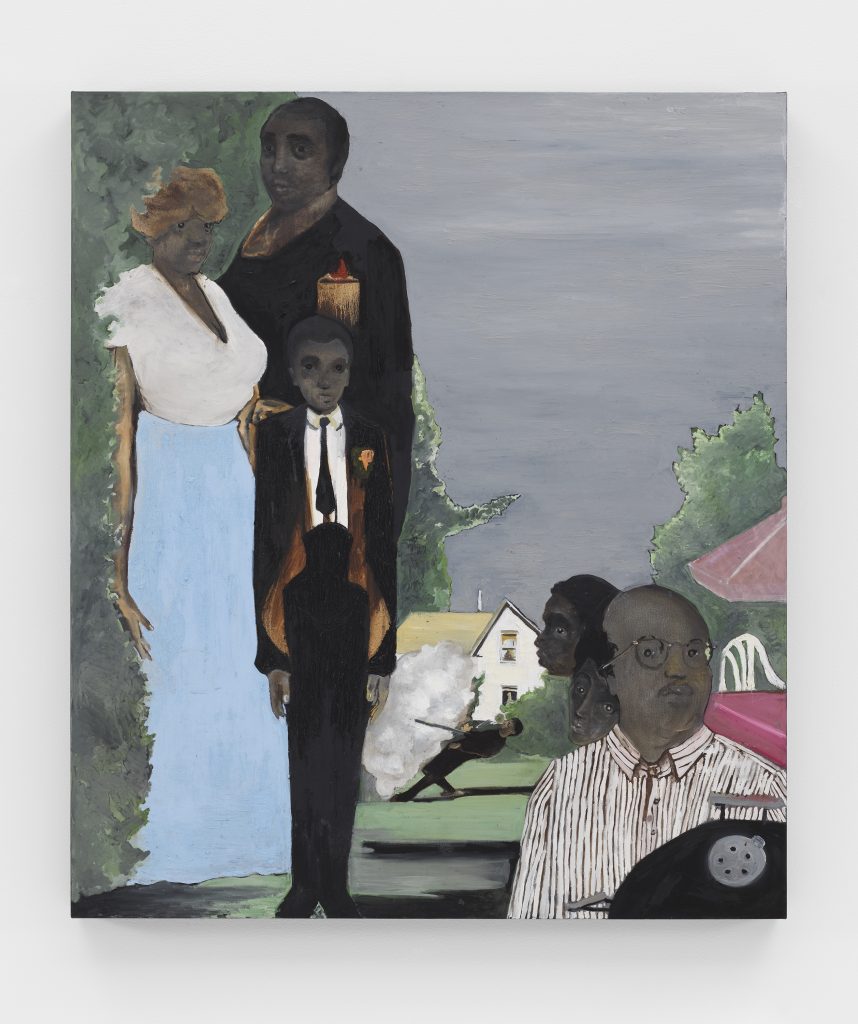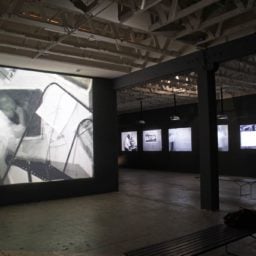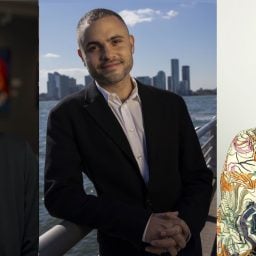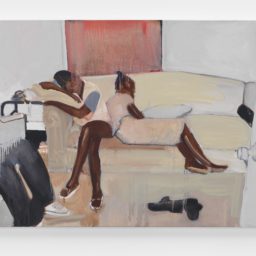The Underground Museum in Los Angeles has finally reopened for the first time since February of 2020—a significant milestone to be sure, and not just because of how much time has passed. The moment also marks a fresh chapter for the young artist-founded space, one that comes with a new leadership team, a special show, and an important anniversary on the horizon.
That significance hasn’t been lost on locals. Tickets to see the venue’s new exhibition—a survey of work by the late painter Noah Davis, who co-founded the Underground Museum a decade ago and died from a rare cancer just three years later—are booked well into February, said Meg Onli, the Underground’s curator and co-director. She, along with fellow director and chief operations officer Cristina Pacheco, make up the new team leading the institution, which reopened on Friday.
“I have never been in a museum that I feel is loved like this,” said Onli, an L.A. native, in a phone interview last month.
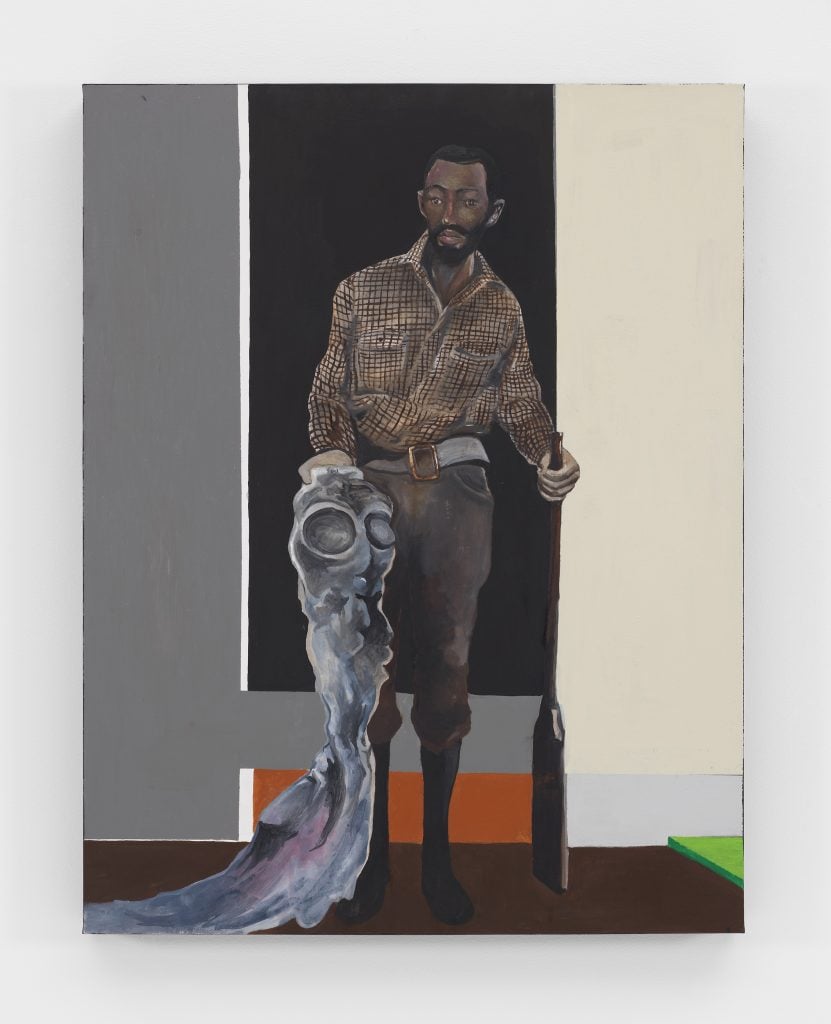
Noah Davis, Man with Alien and Shotgun (2008). Courtesy of David Zwirner.
The anticipation of the reopening speaks to just how far the museum has come since its humble beginnings in 2012, when it debuted in a series of contiguous storefronts in the city’s Arlington Heights neighborhood, which doubled as a home and studio for Davis and his wife, fellow Underground Museum co-founder Karon Davis. Today, the museum on Washington Boulevard is one of the country’s brightest alternative art hubs—not to mention a successful model for other upstart spaces.
Despite being closed to the public for almost two years, the Underground didn’t let a single employee go during that time; all staff members, including docents, received full pay throughout the pandemic. That’s a distinction few other museums can claim. According to a 2021 report, for instance, 228 of the country’s largest arts institutions collectively reduced their workforce by 28 percent during lockdown.
One reason for this is the museum’s core values, Onli explained. “It’s a space that has a connection to a passing—to Noah’s passing. I think there’s a lot of sensitivity around illness and death and care.”
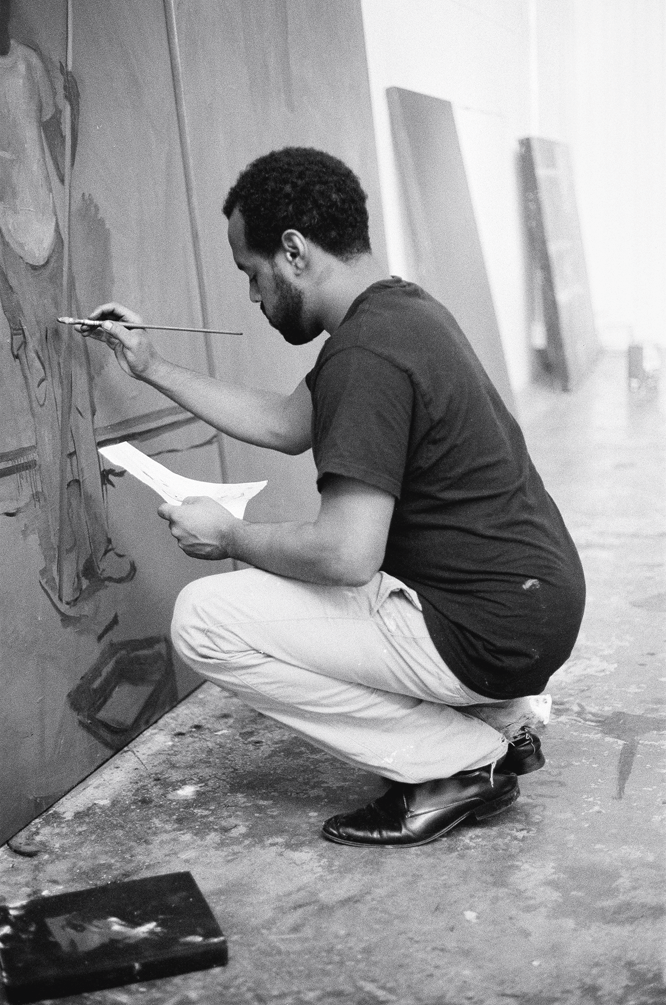
Noah Davis in his studio. Courtesy of the Underground Museum.
But it is also a question of funding—an area where the institution is, for now at least, on fine footing. The museum’s budget comes from a combination of board support, foundation grants, and individual donations (given anonymously, per the institution’s policy). The museum does not have an endowment; all the funding raised goes directly towards operations.
It’s a mixture most nonprofits rely on, but not many can do so as comfortably as the Underground Museum has over the past couple of years, riding a wave of support that mirrors the meteoric rise of Davis’s market. Since 2020, when curator Helen Molesworth mounted a much talked-about exhibition of Davis’s work at David Zwirner in New York, seven of the artist’s paintings have exceeded $100,000 at auction, according to the Artnet Price Database.
The exhibition now on view at the Underground Museum is a version of the one Molesworth debuted in New York. There are a few additions and subtractions to the checklist of paintings, and artist Justen Leroy—who worked with Davis—joined Molesworth in the curation this time around. But the main difference is more emotional than logistical: this, somewhat surprisingly, is the first exhibition of Davis’s work at the venue he helped create.
“In many ways, this is a homecoming—a homecoming, literally, to where Davis had lived,” said Onli. “You definitely feel it. It’s emotional in the space.”
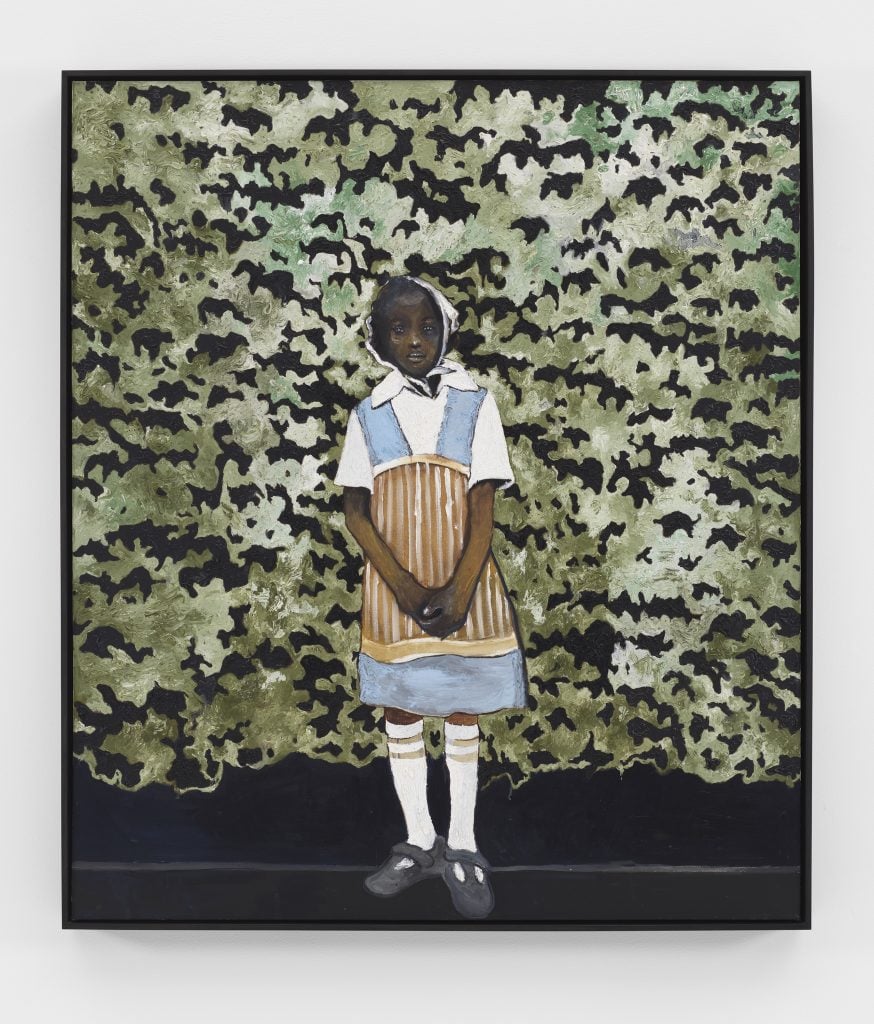
Noah Davis, Mary Jane (2008). Courtesy of David Zwirner.
There’s a tinge of irony, too. The director and curator said that the paintings in the show arrived in carefully crafted, insured crates—a polished institutional packaging that embodies the increased respect the art world now places upon both Davis’s work and the Underground Museum.
“[When] Noah and Karon co-founded the Underground Museum, their goal was to bring museum-quality art to this community in Arlington Heights,” Onli said, recalling the first show in the space, in which Davis recreated artworks in the style of Dan Flavin, Jeff Koons, and other canonized figures. “All of those pieces were fabricated because he couldn’t get museum loans. Now we have loans from MoMA and many collectors.”
“NOAH DAVIS” is on view at the Underground Museum now through September 30, 2022.
